Trees Birds Mammals Fish Amphibians Reptiles
Wild Algarve
Bookshop
Arbutus unedo - Strawberry tree
Phylum: Magnoliophyta - Class: Equisetopsida - Order: Ericales - Family: Ericaceae
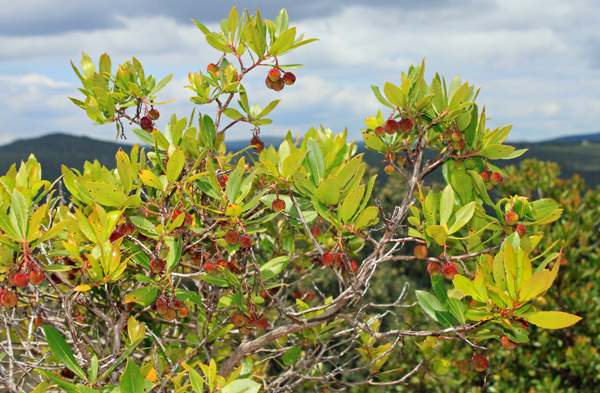
This exotic-looking evergreen member of the Heath family can grows to a height of 12m. With its glossy evergreen leaves and either flowers or fruits (sometimes both) present in every month of the year, the Strawberry Tree is easy to recognise.
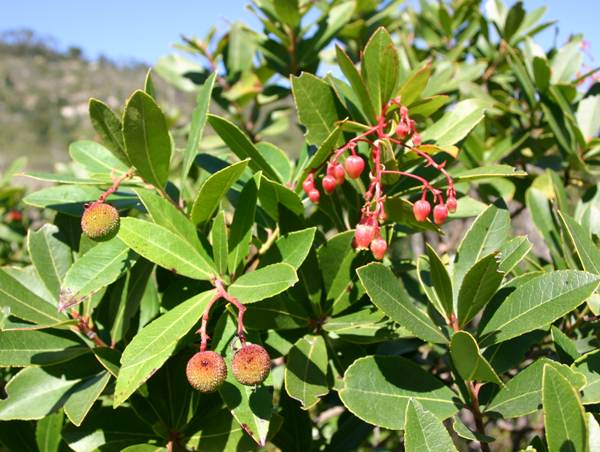
Description
The short-stalked leaves of this much-branching woody plant are hairless, glossy green, oval and slightly toothed. Trunk and branches are brown with reddish tinges towards the bristly growing tips.
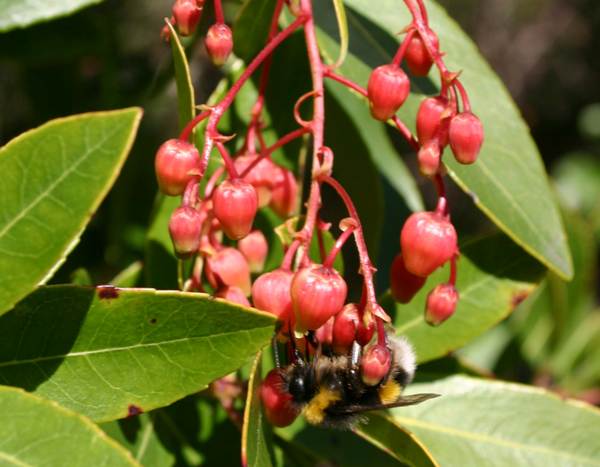
Typical of members of the Ericaceae, the drooping flowers are bell like; they are typically 8mm long and 5mm in diameter, sometimes white but more often tinged with red, pink or green. Smelling like honey, the flowers are particularly attractive to bees, including honey bees. Fruits of the Strawberry Tree start off green but turn orange and eventually red; they do look a little bit like their ground-hugging namesakes, but instread of seeds on the surface there are pyramidal outgrowths all over the spherical fruits. When fully ripened they taste quite pleasant (but not much like strawberries) although with a hint of bitterness.
Distribution
Arbutus unedo is a native of the Mediterranean region, most plentiful in the west. We see lots of Strawberry Trees in southern Portugal, where they grow wild in the hills around Monchique in the Algarve region and in the Alantejo further north.
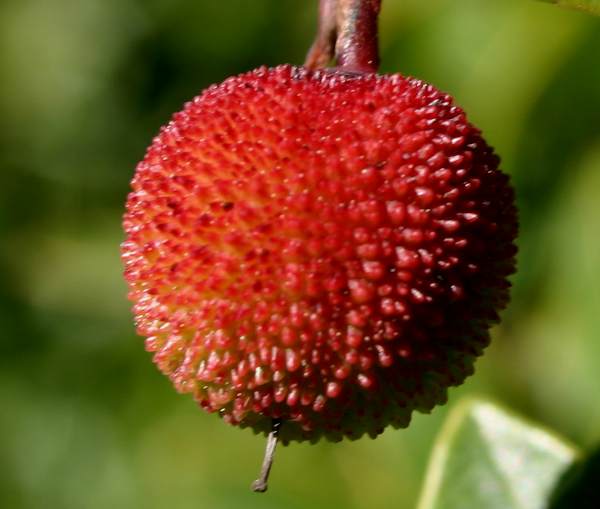
Habitat
The Strawberry Tree is most commonly found on poor soils in maquis habitats, but occasionally plants can be seen on woodland edges and around field margins, generally on higher ground well away from the coast.
Blooming Times
Arbutus unedo produces its flowers between October and April.
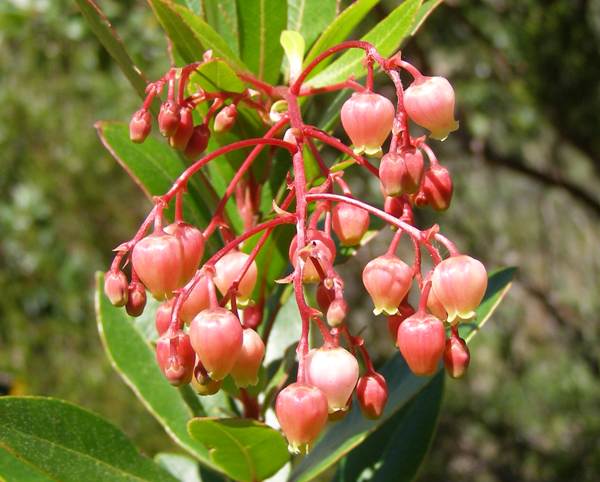
Uses
Although the fruits of Arbutus unedo do not taste anywhere near as nice as they look (they are a bit like lychees), the Portuguese use them to make Aguardente de Medronhos, a brandy-like alcholic drink sometimes called simply Medronho.
The wood of the Strawberry Tree can be used to make high-grade charcoal.
Etymology
Arbutus, the genus name, is simply the Latin name for this kind of tree. The specific epithet unedo also comes from Latin and means 'eat only one' - a reference to the rather bitter taste of the fruits, that when eaten raw are not to many people's liking.
Similar Species
Arbutus andrachne, the Eastern Strawberry Tree, is found in Crete and parts of the eastern Mediterranean. The flowers are erect rather than pendent, and the papery bark of the tree is orange-red and peels off in strips.
All of the photographs shown on this page were taken in the Algarve region of southern Portugal, close to Monchique.
Sue Parker's latest ebook is a revised and enlarged second edition of the acclaimed Wildflowers in the Algarve - an introductory guide. Full details here...
Buy it for just £3.95 on Amazon...
Sue Parker's 5-star acclaimed field guide to the Wild Orchids of the Algarve is now available as an ebook. Full details here...
Buy it for just £5.95 on Amazon...
Please Help Us: If you have found this information interesting and useful, please consider helping to keep First Nature online by making a small donation towards the web hosting and internet costs.
Any donations over and above the essential running costs will help support the conservation work of Plantlife, the Rivers Trust and charitable botanic gardens - as do author royalties and publisher proceeds from books by Pat and Sue.